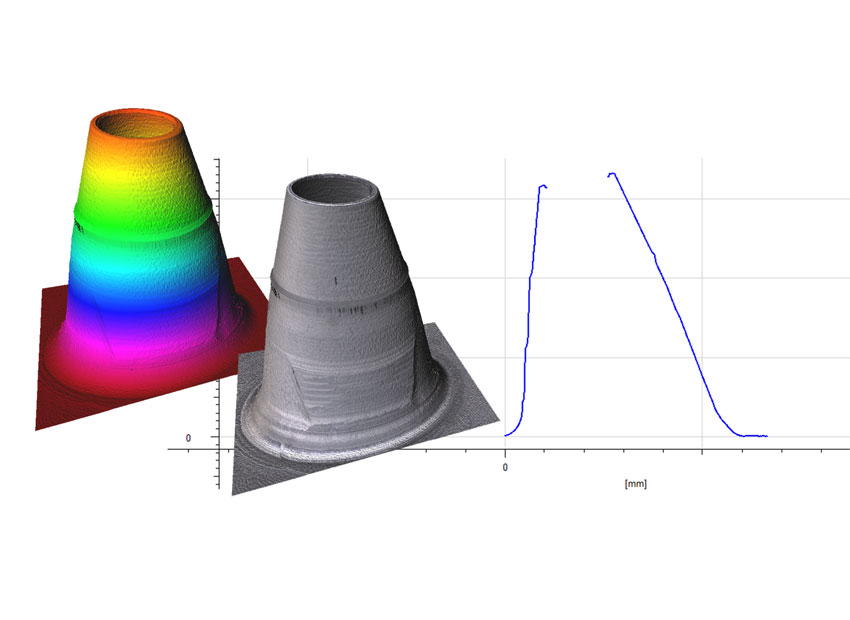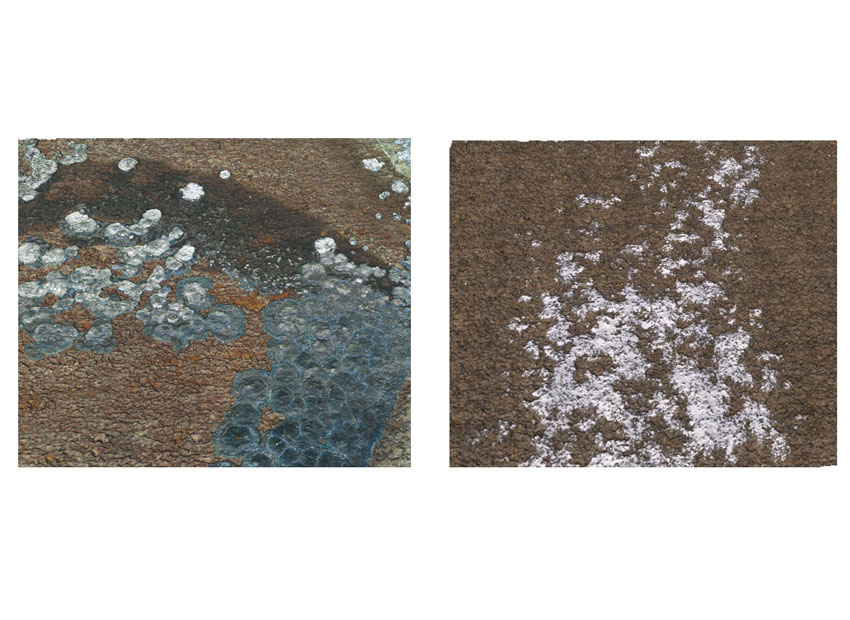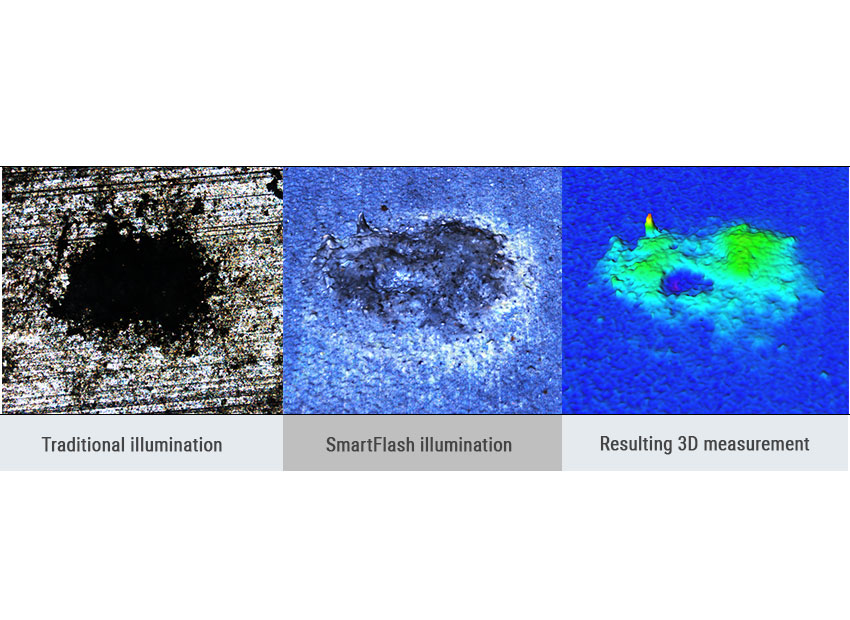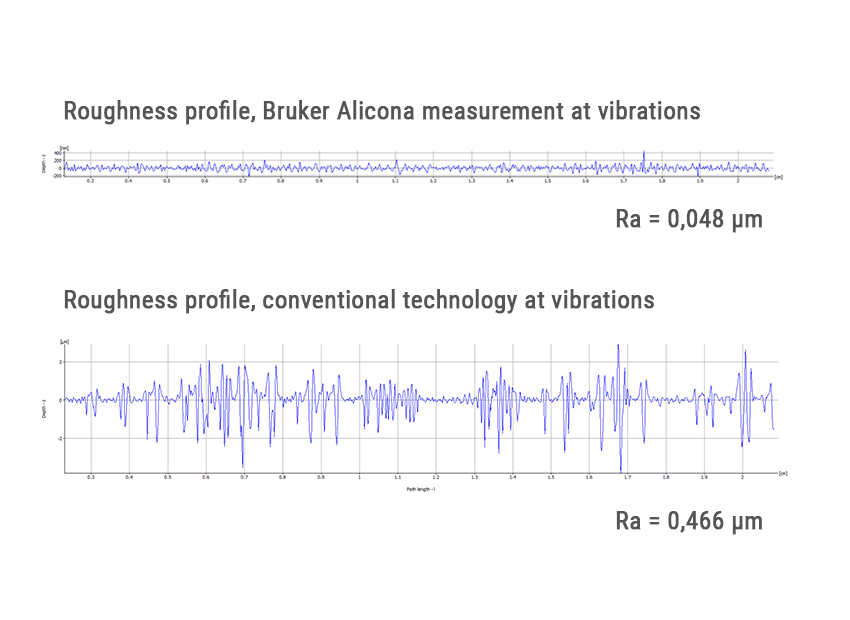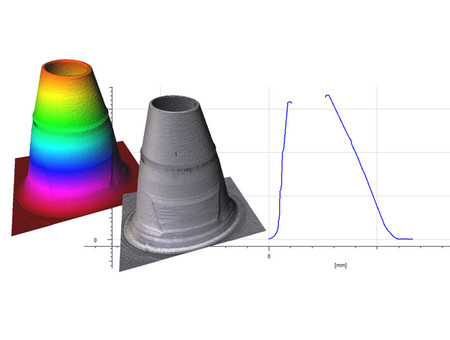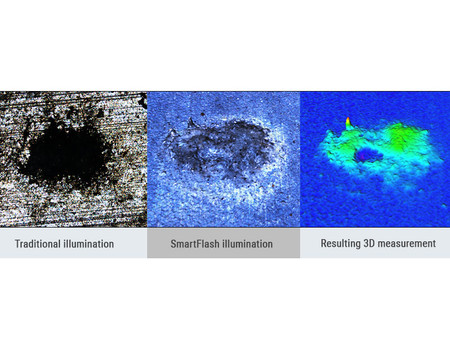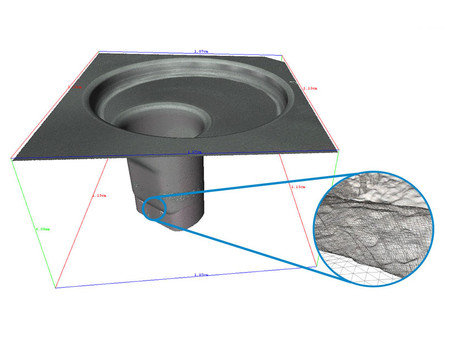What is Focus-Variation?
Focus-Variation is an optical technology which is used to perform high resolution 3D surface measurements. Its main component is a precision optics containing various lens systems that can be equipped with different objectives. It combines the small depth of focus of an optical system with vertical scanning to provide topographical and color information from the variation of focus. In other words: It delivers information about form and roughness of a surface in one go, which makes it super-efficient.

Unlocking new possibilities with Advanced Focus-Variation
Advanced Focus-Variation is further development of Focus-Variation to measure smooth samples. It combines the functionalities of a roughness measuring instrument and a coordinate measuring machine. Users measure workpieces with steep flanks, varying reflections and structured roughness. Advanced Focus-Variation excels in capturing high-resolution measurements of smooth, reflective and high polished surfaces. Supported by the measurement devices InfiniteFocus G6, µCMM and FocusX, Advanced Focus Variation revolutionizes precision measurement.

Advanced Focus Variation on roughness tool
Contact us now to unlock new possibilities in surface analysis.
What´s so great about Focus-Variation
Measuring steep flanks with angles larger than 87° is not a problem at all, and even surfaces with strongly varying reflection properties and greatly varying roughness are measurable. Focus-Variation also allows to measure smooth samples. Plus, users benefit from repeatable, robust and stable measurements. Also take a look at more advantages of Focus-Variation:
Where do you need Focus-Variation?
It’s no exaggeration to give "almost everywhere” as an answer. Focus-Variation is needed for quality assurance in production as well as research and development. The list is quite long: It is used in, e.g., tool and mold making, precision manufacturing, the aerospace and automotive industry, in all kinds of materials science, corrosion and tribology, electronics, and medical device development. Chances are very high that even today, you already used one or more components that were produced by applying Focus-Variation.
Video:
Focus-Variation explained in 5 minutes
Videoblog: We present our technologies -
Focus-Variation & Vertical Focus Probing
Want to learn more about Focus-Variation technology?
The technical principle
In contrast to other optical techniques that are limited to coaxial illumination, the max. measurable slope angle is not only dependent on the numerical aperture of the objective. Focus-Variation can be used with a large range of different illumination sources (such as a ring light) which allows the measurement of slope angles exceeding 87°. With a beam splitter mirror, light emitted from a white light source is introduced into the optical path of the system and focused onto the sample via the objective. The light is reflected in several directions as soon as it hits the sample via the objective. All rays emerging from the sample and hitting the objective lens are bundled in the optics and are gathered by a light sensitive sensor behind the beam splitting mirror. To perform a complete detection of the surface with full depth of field, the precision optics is moved vertically along the optical axis while continuously capturing data from the surface. Algorithms convert the acquired sensor data into 3D information and create a true color image with full depth of field. This is achieved by analyzing the variation of focus along the vertical axis.
